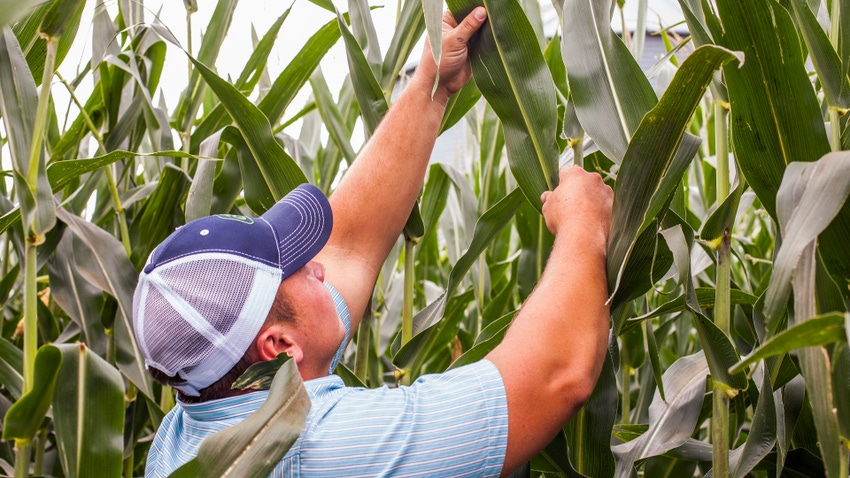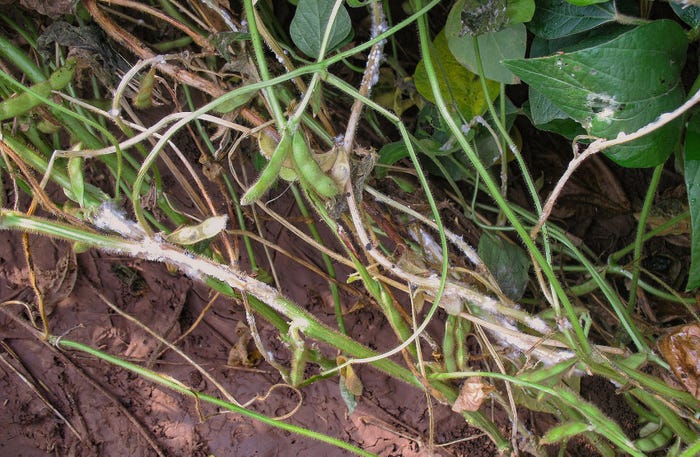May 1, 2023

As we approach the summer months, corn and soybean diseases become a greater concern. By taking a few proactive steps now — and knowing which symptoms to watch for — you can protect your acres to help ensure maximum yield potential in 2023.
Protect Against Disease
Doug Jones is a Corteva Agriscience market development specialist covering Illinois. There are three important steps he advises farmers take to prevent and/or manage corn and soybean diseases.
“Those three steps are simple: know, watch and look,” Jones says. Here’s what he means:
KNOW — “Know the field history of and crop tolerance to the diseases in your area,” Jones says. He explains having historical knowledge of diseases you’ve dealt with in the past, the diseases your neighbors have dealt with and the disease tolerance in your selected hybrids will help you plan this season’s management.
WATCH — “Watch the weather for conditions favorable to common diseases in your area,” Jones says. He explains keeping an eye on the forecast will help you judge which diseases you might see on your acres — and help you gauge the disease pressure.
LOOK — “Look in your fields, get out and walk your fields, scouting for crop disease symptoms on a regular basis,” Jones says. He explains it’s important to scout at least once every two weeks, if not weekly, as some diseases can spread rapidly, infecting a large percentage of a field within days.
Jones also advises applying a fungicide to your corn and/or soybean fields before diseases have a chance to take hold and rob yield potential.
When it comes to diseases to watch for this year, Jones says, each geography is different. But if he had to choose one for corn, it would be tar spot, and if he had to choose one for soybeans, it would be white mold.
Watch for Tar Spot

Photo submitted by Corteva Agriscience
Early tar spot manifests as small, raised stromata on plant leaves. The stromata look like little black spots — or flecks of tar — that turn into black ovular or circular lesions. These symptoms will start on the lowest leaves, spreading upward to upper leaves, leaf sheathes and the husks of developing ears. Eventually, the disease can cause stalk weakening, rotting, lodging and even premature plant death.
When it comes to conditions for development, tar spot favors the following:
Cool temperatures, about 60 to 70 F
High relative humidity (>75%)
Frequent cloudy days
Seven-plus hours of dew at night
Aproach® Prima fungicide can protect corn against tar spot from the inside out with both a preventive and a curative mode of action.
Watch for White Mold

Photo submitted by Corteva Agriscience
White mold is a fast-moving disease that can go from infecting 10% of a field in one season to 50% the next. Cool, cloudy and humid weather conditions coinciding with soybean flowering create a favorable environment for white mold development. Although these conditions are most likely to occur in Northern areas, farmers in other Midwest and even Southern states have reported outbreaks in recent years.
If you suspect a white mold infection, be sure to start scouting at the soybean stems. The first signs are gray to white lesions on the nodes. Lesions rapidly spread above and below infected nodes and are often covered in fluffy, white growths.
Aproach fungicide is a great defense against white mold, because it works inside the plant, ensuring protection from the top, down to lower leaves and stems.
As Jones says, tar spot and white mold aren’t the only diseases you may find in your fields. Download the Corteva Disease ID Guide for a more detailed rundown of 14 diseases — and advice on fungicide application timing.
™ ® Trademarks of Corteva Agriscience and its affiliated companies. Aproach® and Aproach Prima are not registered for sale or use in all states. Contact your state pesticide regulatory agency to determine if a product is registered for sale or use in your state. Always read and follow label directions. © 2023 Corteva.
You May Also Like





